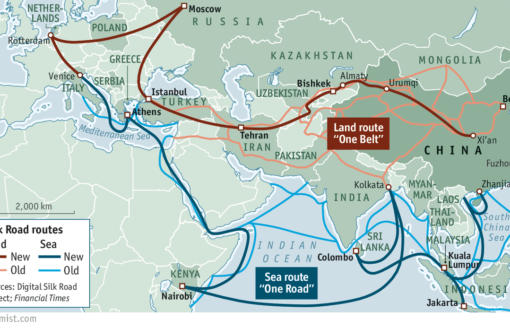In the course of recent decades China’s reform in various aspects and the opening-up policy have made its economy growth noticeable worldwide. In an effort to encourage global investors to use RMB, China has set out aggressive plans to internationalize its currency.
A year ago, as part of its diversification strategy, the European Central Bank (ECB) invested €500 million ($560 million) of its foreign-exchange reserves in Renminbi (RMB) assets by selling a little bit of its U.S. dollar holdings.
Despite the fact that the ECB’s investment in RMB assets accounted for only about 1% of its total €68 billion of foreign-exchange reserves, it represents a milestone for the Chinese currency. China is focused on growing market trust in RMB as a global reserve currency and recognizing China’s status as a financial powerhouse in Europe. Since being included in International Monetary Fund’s Special Drawing Rights basket of reference currencies in October 2016, the RMB has been acknowledged by an ever increasing number of countries as a reserve currency.
There is still plenty of room for RMB to become a major reserve currency. The currency is being used in around 2% of global payments, which is not on a par with China’s capturing 10% of global GDP lately. Disregarding being the world’s leading country in terms of trade, China settled just 20% of its foreign trade in RMB, much smaller than the around 60% of the eurozone’s external trade being settled in euros and 40% in yen for Japanese trade. Nevertheless, China will help make RMB a global reserve currency alongside the U.S. dollar and the euro.
In any case, the ECB’s feted RMB support ought to be taken as a driving force for Beijing to push ahead with its economic and financial market reforms. China has made progress with greater use of RMB globally, gradually and steadily through trade settlements in the currency and RMB-denominated products in offshore markets, for instance. However, more radical changes are required to remove the main obstacles to the evolution of China’s capital markets, including a more market-oriented regulatory framework, increased transparency of data disclosure, and emerging of small institutional investors.
In order to achieve full convertibility of the RMB and become a real reserve currency, additional work needs to be done in some areas. First is to maintain economic stability by achieving steady growth, a stable exchange rate and low inflation. China’s enlarging share of global trade and the increasing size of its economy are important to its trading partners, which obviously legitimize greater use of the RMB. Second is to further develop onshore capital markets and accelerate their integration with the offshore ones. Third is to step up efforts in creating strong and trusted legal and regulatory structures. China has been utilizing the Shanghai Free Trade Zone (SFTZ) to pilot with financial changes and open up the domestic markets (the model of free trade zone has been extended to Tianjin, Fujian and other cities). Most of the restrictions applicable to onshore currency trading in China have been lifted in the SFTZ. China has imposed various measures to strengthen the stability of its banking system, develop a more comprehensive credit-assessment system, and increase transparency, especially in areas of monetary policy and foreign exchange.
In summary, the internationalization of RMB has been a resolute objective and national strategy for the Chinese government, and this process is moving forward at a pace faster than anticipated previously. We should hope to see strong financial regulations as well as market driven exit mechanisms to be in place for financial institutions in particular.
Supportive government policies and macroeconomic stability will continue to facilitate the internationalization process of RMB, enabling the Chinese currency to play a bigger role in the reserve currency framework worldwide.





Chinese Investments in Philippines